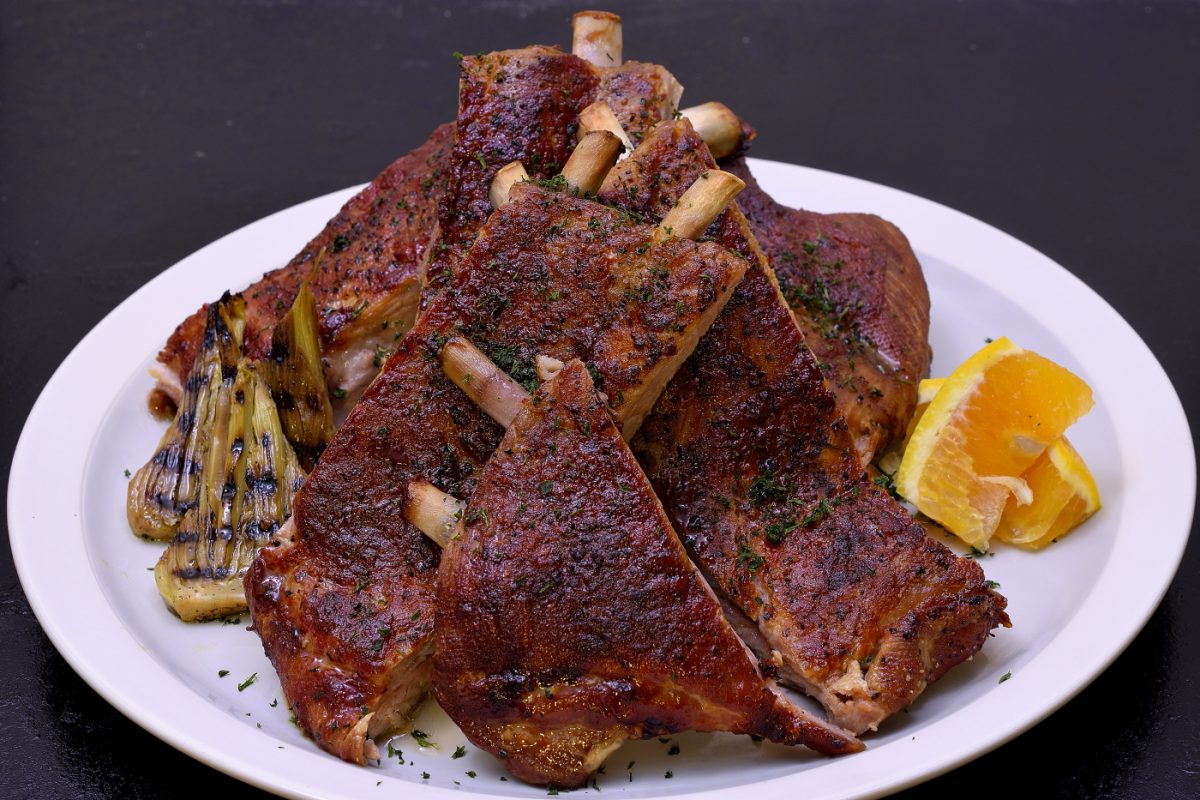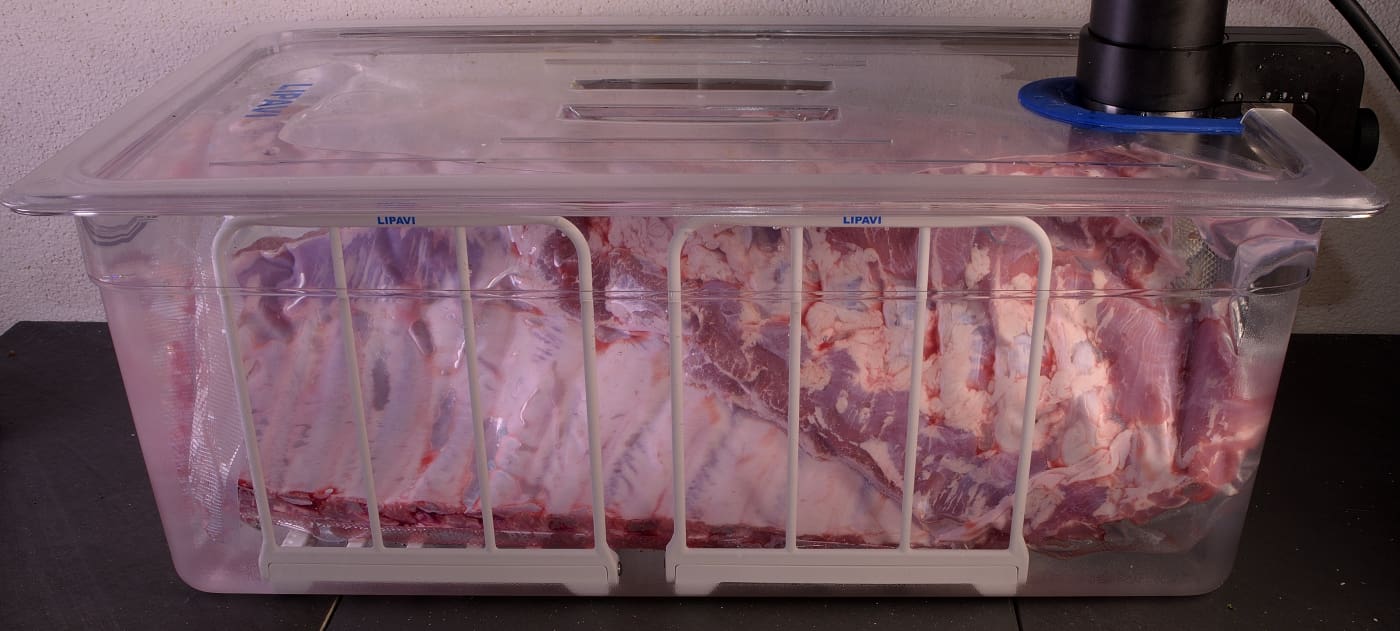
Above: Lipavi C20 container, N20 polycarbonate racks. Lipavi C20L-UNIR lid.
Actual prep time: 1 hour
Serves 1 person per 24 oz/675 g unless you’re in Texas
Level of difficulty 3
Notes:
The picture above shows an entire side of pork spare ribs. Because of the unique characteristics of sous vide, the rack can be divided into smaller pieces, packaged separately and processed without recalculating the time/temperature guideline.
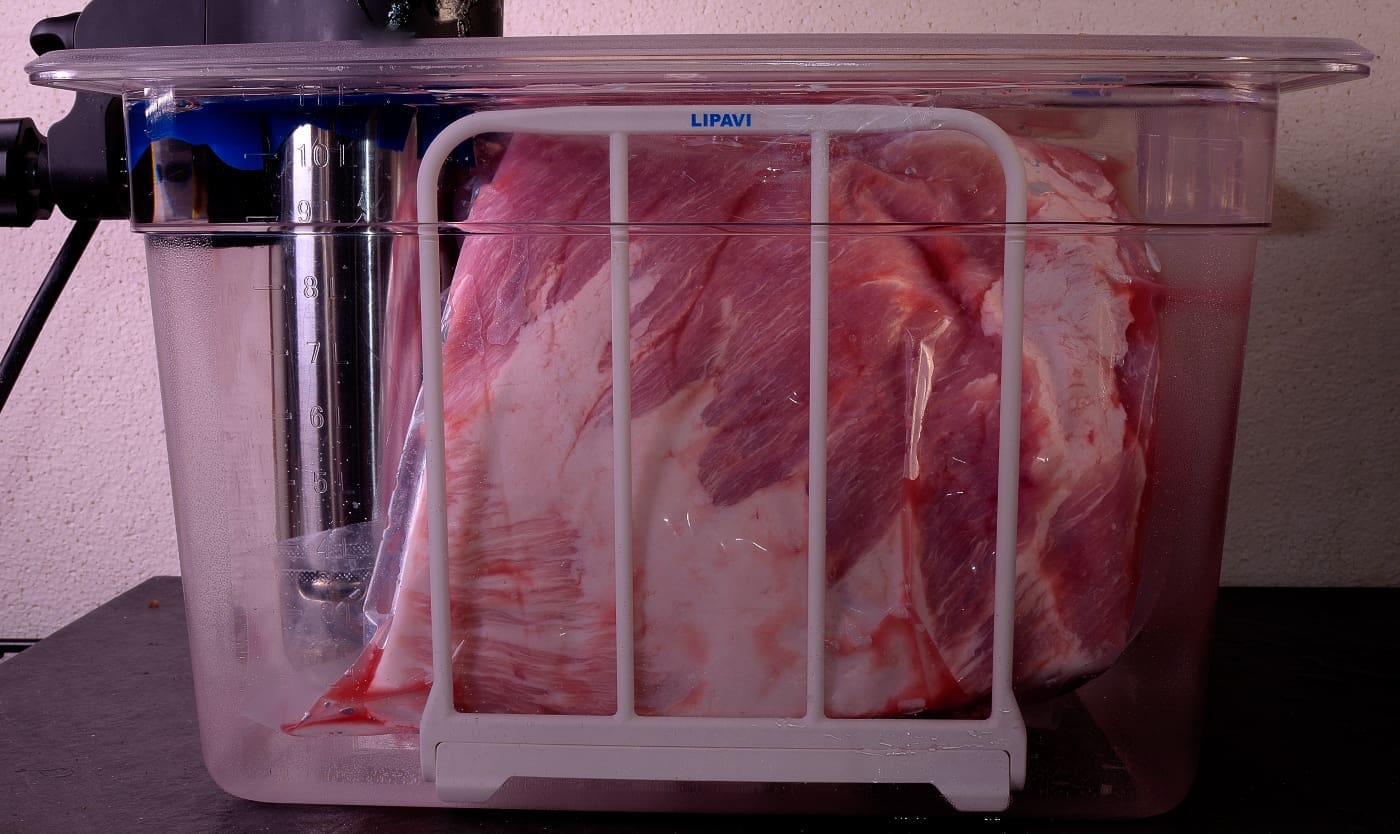
This gives you more storage and preservation flexibility. As long as the seal is not broken, refrigerator shelf life is extended to at least two weeks, not unlike a sealed carton of pasteurized milk. Once the seal is broken, the product should be utilized within four days.
Procedure:
Stage the spare ribs into dedicated vacuum bags. Seal and sous vide process at
140 F/60 C for 24 hours.
While the ribs are processing, make the Brisk BBQ Sauce. Set aside. After the 24 hours have elapsed, submerge the packaged ribs in iced water until they reach 70 F/21 C. Refrigerate at 40 F/4 C until use. This cold shocking process protects your refrigerator and its contents from temperature contamination–refrigerators are not capable of cooling hot foods in a timely manner. After cold shocking, the ribs can be kept sealed and refrigerated in this tenderized, pasteurized/preserved state for at least two weeks.
Day of service:
Submerge the refrigerated package(s) of spare ribs in hot water for five minutes to fully melt the gel. You can use hot tap water (125 F/52 C) or the sous vide bath if you are processing something at the time. Cut open a corner of the bag and harvest the juices into a microwaveable container. Clarify the juices according to the method explained HERE.
Once clarified, the juices are the equivalent of a salt-free, reduced consommé–clear and packed with flavor. A side of spare ribs will usually yield about 1 cup/225 ml of clarified Sous Jus–too much to discard! These juices can be substituted in any savory recipe that calls for water or stock. Add enough of the clarified juices to the Brisk BBQ Sauce to achieve the desired consistency–usually about 4 oz/110 ml per batch.
Low and Slow is the Way to Go
The smoking/roasting step for this recipe utilizes temperatures ranging from 180 F/82 C to 225 F/121 C. The lower the temperature used, the more smoke flavor will be imparted to the meat. Depending on this factor and the individual smoker itself, 3-6 hours will be required to achieve the desired appearance, texture and a minimum internal temperature of at least 140 F/60 C. If an indoor oven is used, the recommendation would be 225 F/121 C for approximately 3 hours.
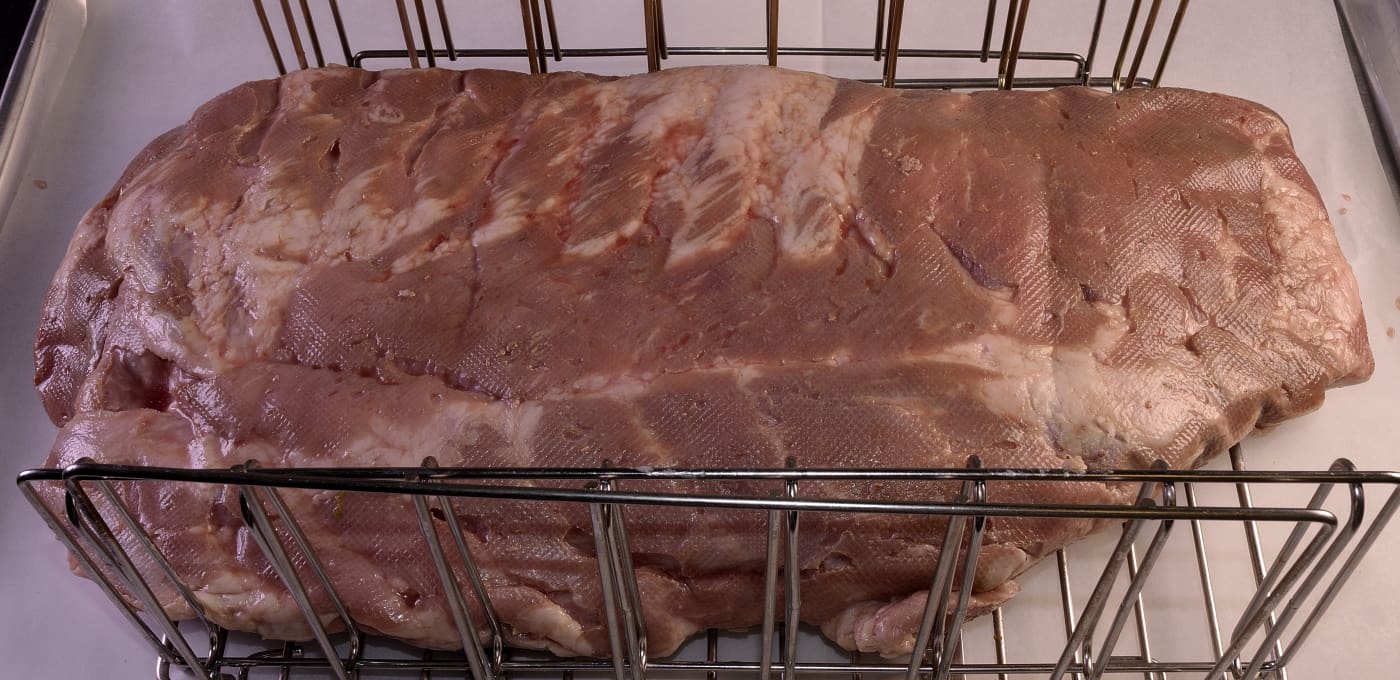
Stage the processed spare ribs on to a suitable rack. Pat dry.
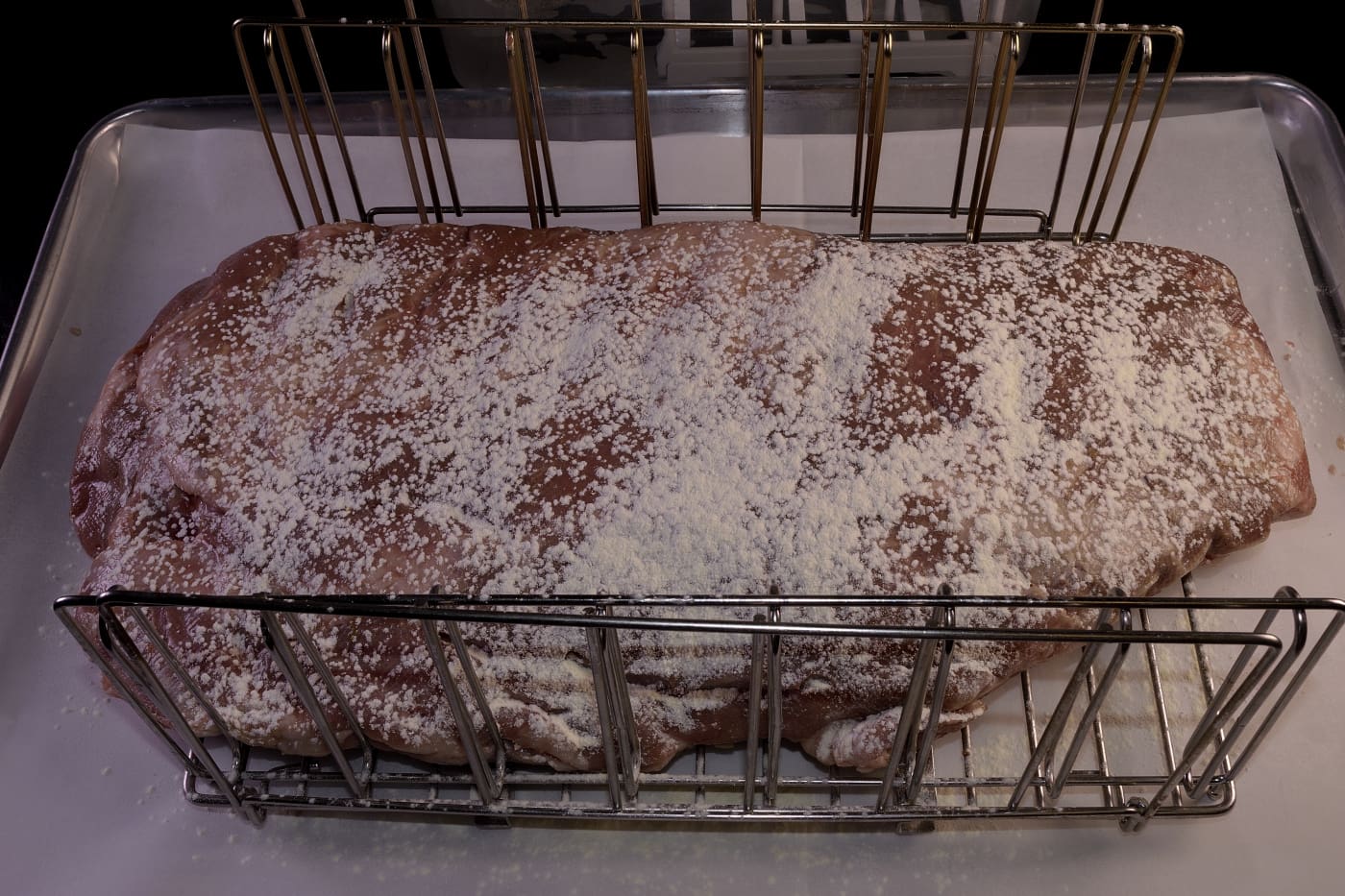
Dust lightly with the powdered egg white or brush with 1 fresh egg white beaten with 1 oz/30 ml water. Egg whites replace the albumins released from the spare ribs during processing. This light coating recreates the sticky surface that is inherent in all meat and helps seasonings to adhere.
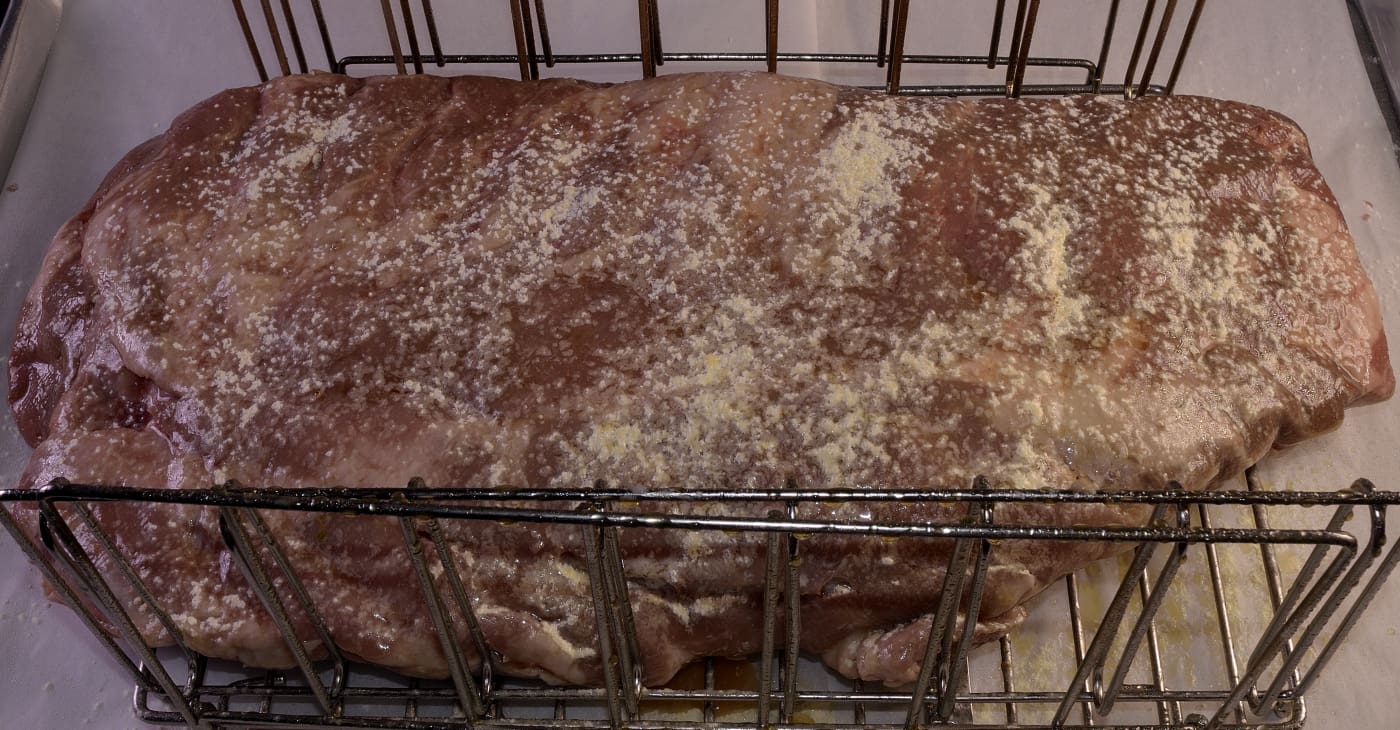
Use a spray bottle to moisten the surface–not necessary if you use fresh egg whites.
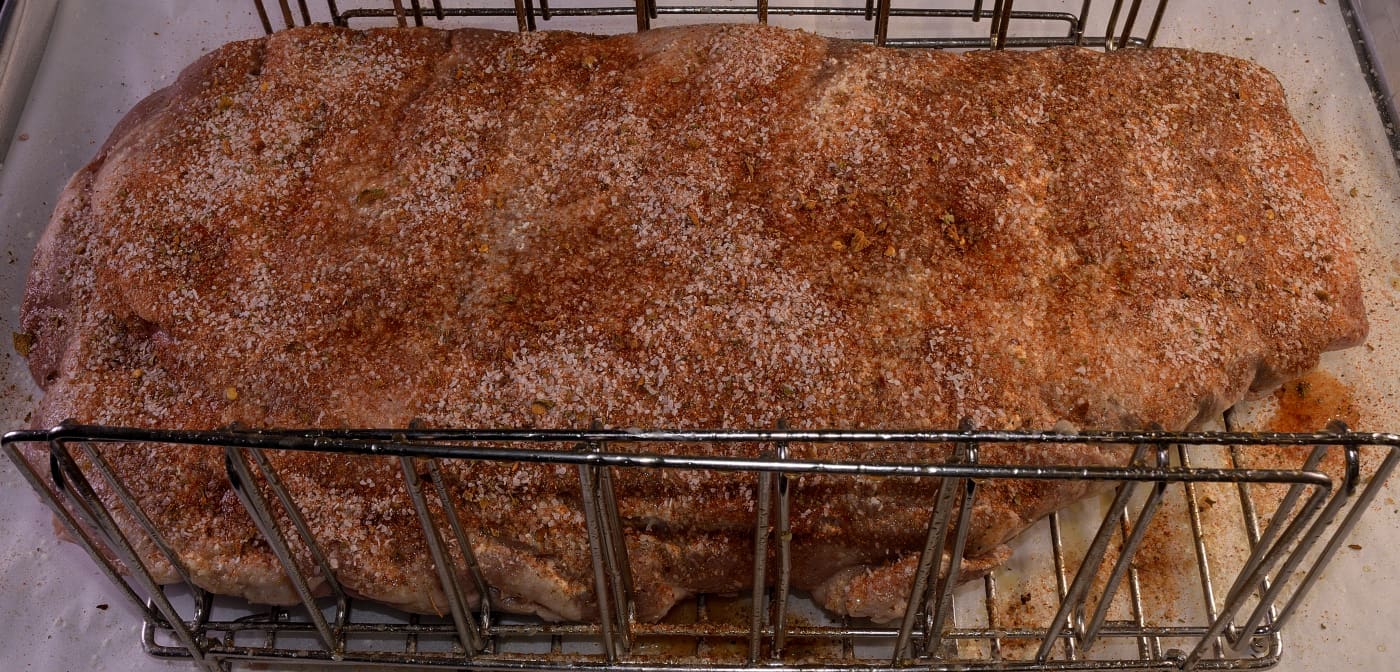
There is no need to rub! Sprinkle generously with the desired seasonings. Visit HERE for our dedicated list of seasonings and rubs.
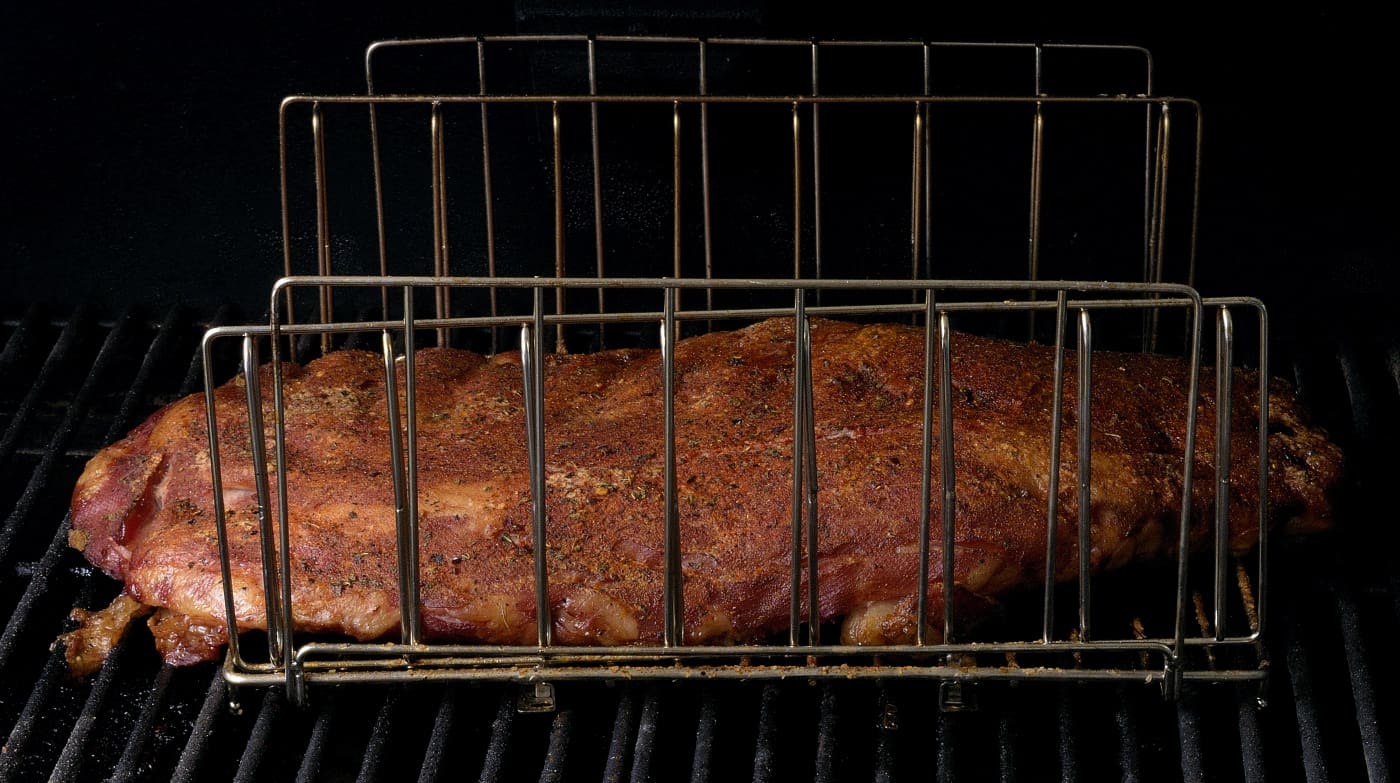
Smoke/roast for until the appearance and internal temperature requirements have been achieved. At 225 F/121 C this usually takes at least 3 hours.
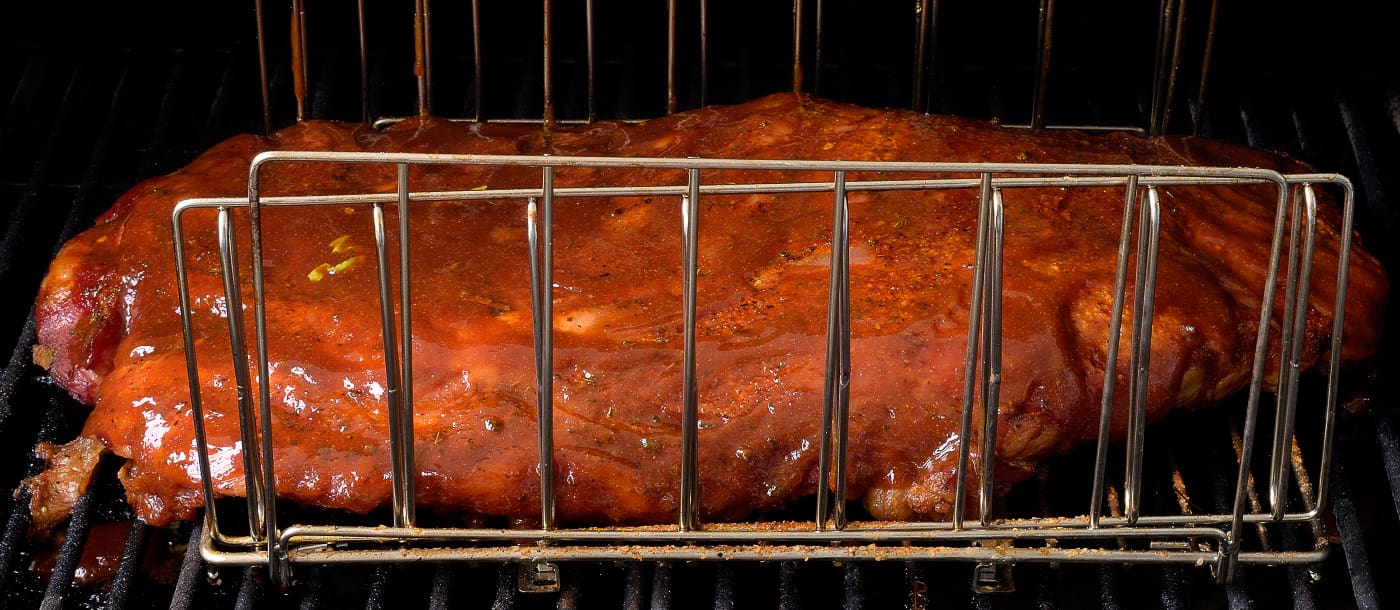
Baste with the Brisk BBQ Sauce and return to the smoker/oven for approximately 45 minutes.
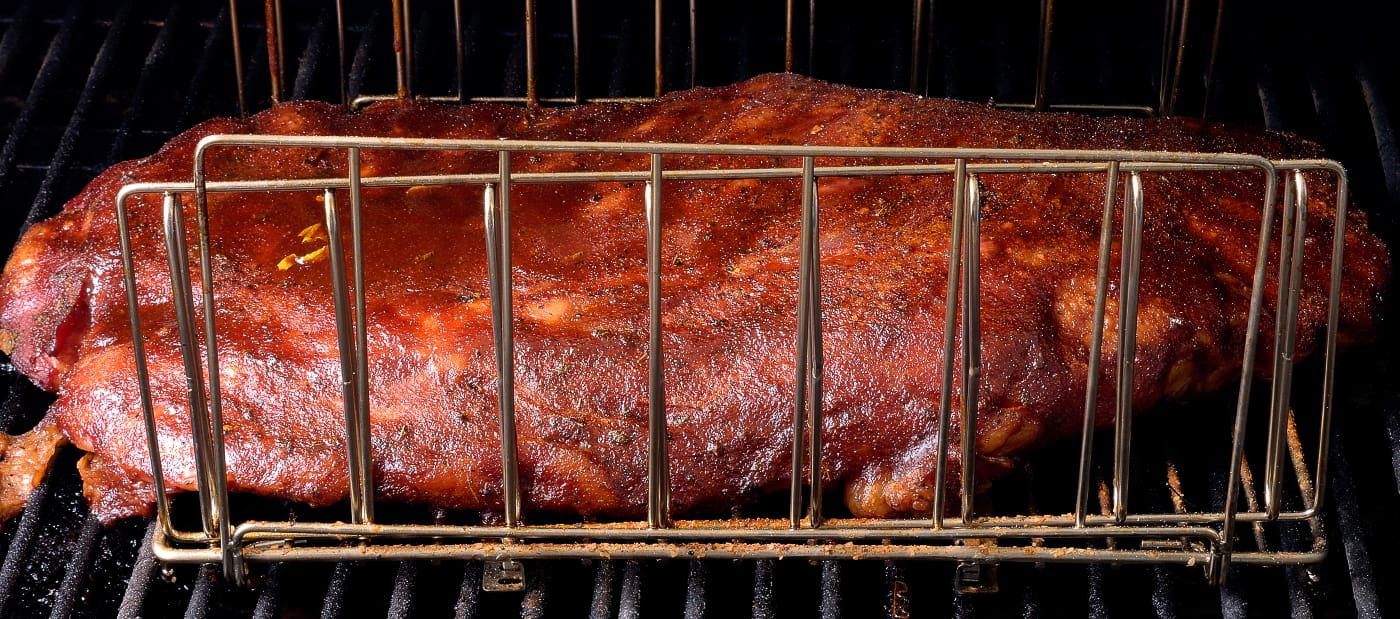
Money!
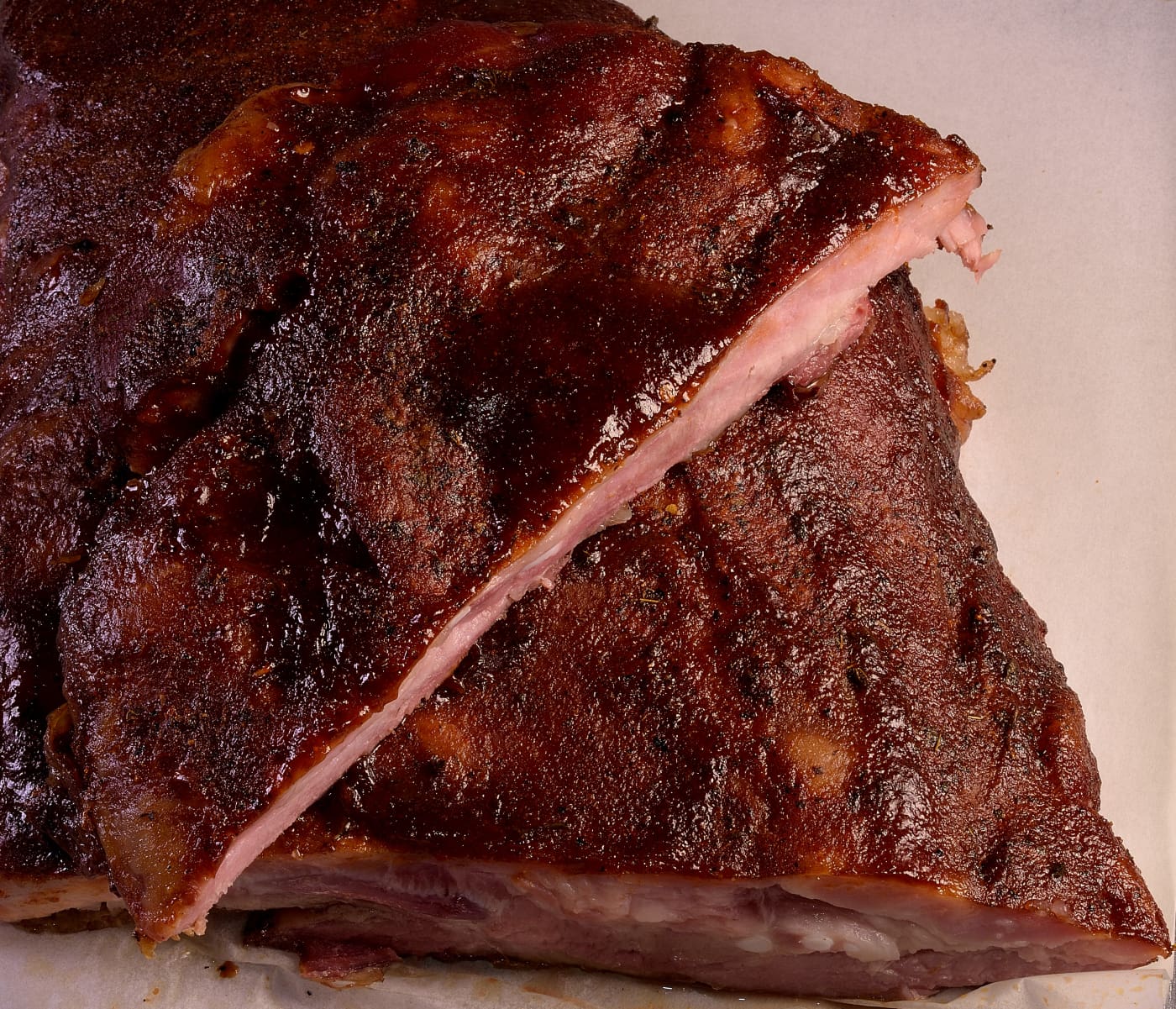
Basting violates the sensibilities of some purists and is always optional. It does create a pleasing and almost sensual visual effect.

The longer the ribs are left in the smoker, the more the bones will protrude. This effect can be used to gauge your level of preferred tenderness–anywhere from “steak-like” to “fall off the bone.”
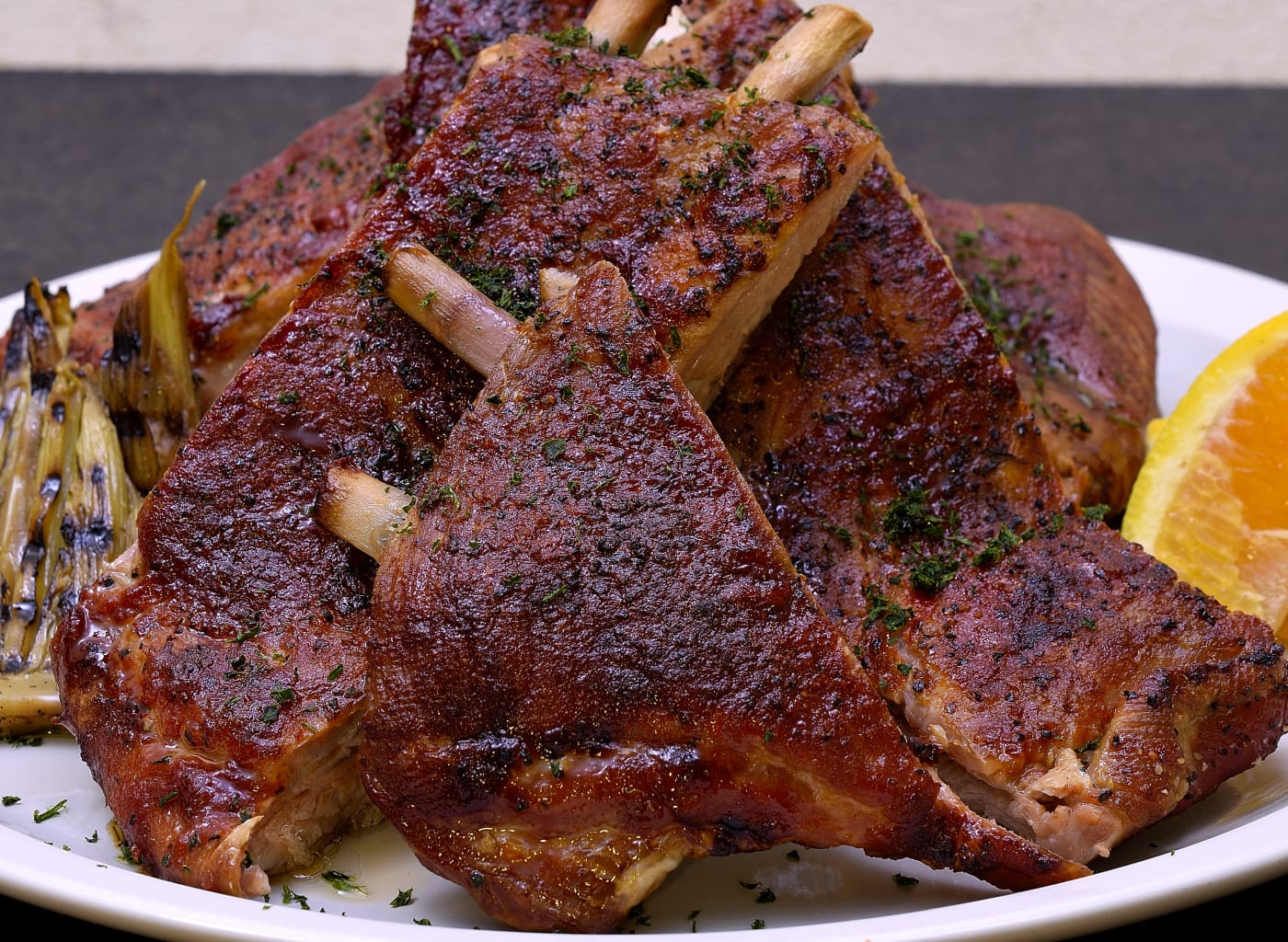
A little something sweet and a little something savory…sous vide celery hearts, linked HERE.

and, of course, chopped parsley…
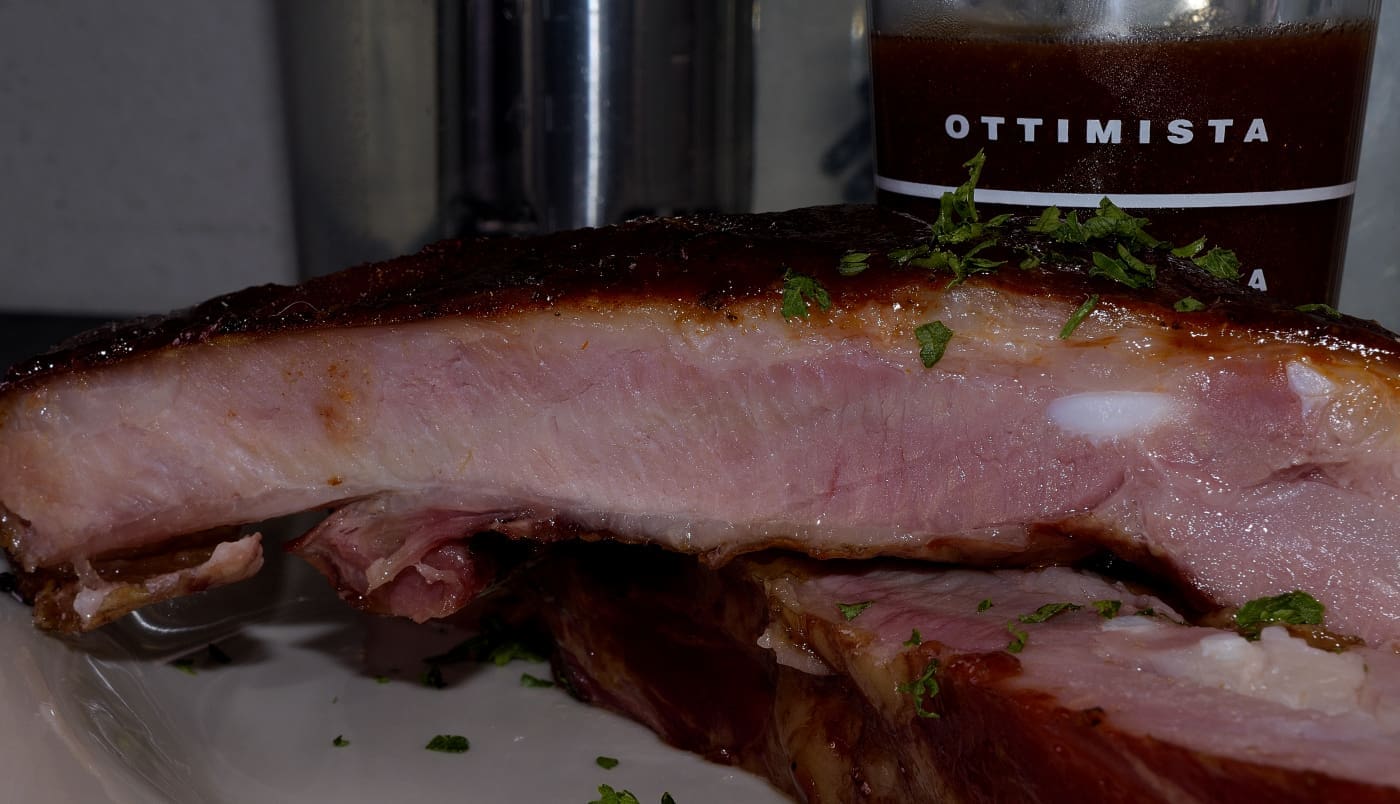
Always the optimist!
Norm King
Visit us live on Facebook at SVR–Sous Vide Resources; Low Temperature Pasteurization, Sous-B-Q™
